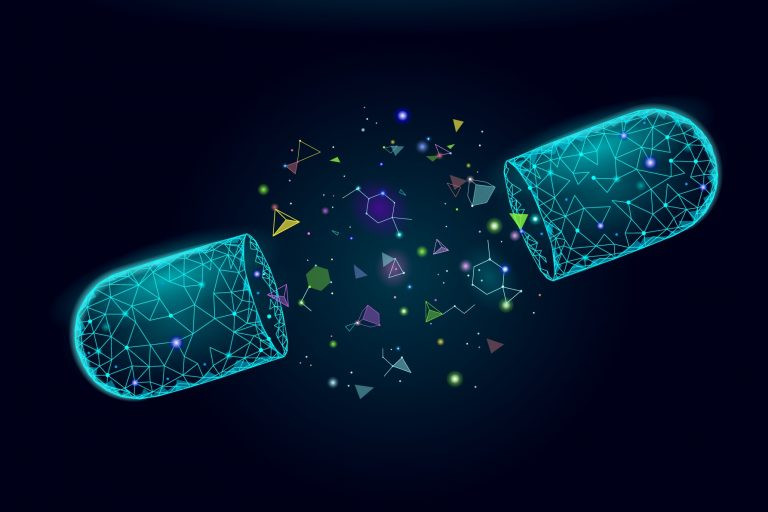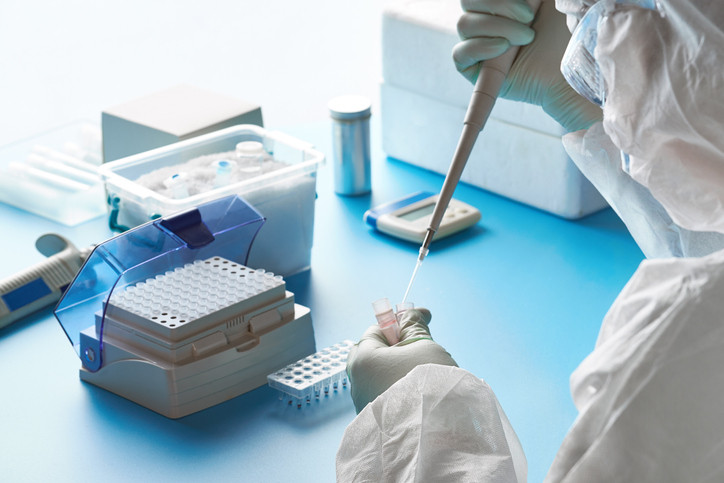Life Sciences
Growing investments in life science R&D and stringent regulatory guidelines for product quality demand new solutions for characterizing systems such as nanovectors, recombinant proteins, monoclonal antibodies, active ingredients or pharmaceutical emulsions. Our unique technologies, enabling dilution-free and non-destructive measurements, provide you with the physicochemical insight you need to improve your product performance and quality.
Lipid Nanoparticles (LNPs)

Lipid nanoparticles (LNPs) have emerged as versatile carriers for drug delivery due to their unique properties, including high biocompatibility, stability, and the ability to encapsulate hydrophobic drugs. To ensure the effectiveness and safety of these drug-loaded LNPs, it is crucial to characterize their physicochemical properties accurately.
DLS has been widely used as a particle sizing method in this context, to assess the homogeneity and polydispersity of LNPs, ensuring consistent drug loading and release characteristics. Additionally, the technique allows for monitoring changes in the size and stability of LNPs over time: by detecting aggregation or destabilization processes, DLS helps in optimizing formulation parameters for improved shelf life and performance.
LNP formulations often exhibit high turbidity, which prevents characterization in their native state with standard DLS, as the results would contain undetectable and systematic errors due to multiply scattered light. To overcome this limitation, the Modulated 3D technology implemented in the NanoLab 3DTM and in the LS SpectrometerTM suppresses multiple scattering and enables accurate and reliable characterization of LNPs independent of formulation concentration.
Zero-shear viscosity of liquid drugs

Need a fast, non-destructive method that requires just a few microliters to measure the zero-shear viscosity of your protein solution? DLS microviscometry might be just what you are looking for.
The viscosity is a key parameter for proper syringeability and injectability assessment but is often hard to assess reliably. At the same time, injectables are typically formulated at high concentrations resulting in high viscosities while the desired working volumes involved are in the order of microliters.
Our NanoLab 3D features a DLS microviscometry tool to tackle exactly this challenge. Samples are loaded in a microvolume cuvette, and with the addition of some tracer particles, the viscosity reads directly from the software. The measurable viscosity ranges from 0.01 cP to 1000 cP.
Learn more:
Our poster on DLS microviscometry of concentrated protein solutions
Adeno-Asssociated Viruses (AAVs): sizing & capsid load determination

Adeno-Associated Viruses (AAVs) are promising gene therapy vectors with high delivery efficiency and low immunogenicity. Characterizing their Critical Quality Attributes (CQAs), including integrity, purity, potency, and genomic titer, ensures safe and effective use. This understanding enables better manufacturing control, consistent outcomes, and maximizes therapeutic potential.
DLS and SLS offer a wide range of possibilities to characterize AAVs. Unlike methods such as ELISA, qPCR, AUC, or TEM, light scattering is a rapid, non-destructive technique that requires little sample preparation, low sample volume and yields numerous outputs such as size distribution, particle shape, concentration, vector loading, aggregation state, and stability.
Dynamic Light Scattering (DLS) as conducted with the NanoLab 3D™ measures thes size of AAVs in solution, providing information about their average diameter, polydispersity, and the presence of aggregates. It is particularly useful for assessing the quality and homogeneity of AAV preparations. In addition, DLS can also provide insights into the stability of AAVs; by monitoring changes in particle size or aggregation over time or in response to temperature changes, researchers can assess the robustness of AAV formulations under various storage or environmental conditions. This information is vital for ensuring the long-term viability and efficacy of gene therapy products.
Static Light Scattering (SLS) complements DLS by determining the capsid load of AAVs: this requires the LS Spectrometer™, with the Variable Multi-Angle (V-MALS) capability:
A first possibility is to measure the molecular weight of the capsids, which varies depending on their load. For this, a series of SLS measurements can be programmed in a few clicks on the LsLab software, and the data can be readily fed into our integrated and automated ZimmPlot analysis tool.
Another way to determine capsid load is to measure the shape ratio (also called Q ratio) Rg/Rh, whose value will readily indicate whether one is looking at an empty or loaded sphere. This parameter is readily assessed via a quick and programmable multi-angle SLS measurement to obtain Rg, complemented by a simultaneous DLS measurement which provides Rh.
Contact us for more information!
Learn more:
Application report on DLS sizing of AAVs
Application note on the Zimm Plot method
Customer publication on particle shape characterization
Drug release monitoring

The safety and efficiency of drugs can be improved by developing carrier systems that improve the rate, time, and place of the release of the active ingredient into the body.
Light scattering is the ideal method to monitor drug release in-situ.
When working with polymeric drug carriers, controlling micro structuring during formulation is critical to the resulting physicochemical properties and final dosage form. Classical rheology has been limiting progress in this area due to sample disruption. Our contact-free rheology approach with the DWS RheoLab offers insights into these crucial problems over a broad frequency range.
Stimuli-responsive hydrogels have also been investigated as promising candidates during the past decades, as they enable the controlled uptake and release ability of different kinds of molecules. In this context, DLS and DWS provide a means to precisely monitor the changes in sample structure as well as particle size and shape during every step of the process.
Learn more:
Our application note on drug release in a micellar surfactant
Our webinar on pharmaceutical application of DWS.
Customer publication on smart microgels used as drug delivery vehicles
Customer publication on the microstructuring of a polymer-drug system studied by DWS
Accurate sizing of proteins, vectors & polymers
Have you ever conducted DLS particle sizing? Then you certainly know that the main drawback of the technique is multiple scattering, which mandates drastic sample dilution. Therefore, when working with standard DLS instruments, there is no guarantee that the results will be accurate and as a user, you have to live with this uncertainty.
Another challenge is the typical unreliability of data fitting algorithms commonly provided by DLS manufacturers. Poor peak resolution and spurious peaks appearing at low lag times are issues that most DLS users have witnessed.
Our technology removes these limitations: all our DLS instruments feature an embedded signal filter for multiple light scattering, the Modulated 3D technology. In addition, our software comes with our CORENN algorithm specifically developed to address the limitations of standard DLS algorithms such as false peaks or poor peak resolution in the particle size distribution.
Learn more:
Reliable Particle Sizing in Vaccine Formulations using Advanced Dynamic Light Scattering
Our demo video of the Modulated 3D technology in the NanoLab 3D
Our learning page on the Modulated 3D technology
Scientific publication on the Modulated 3D technology
Application report on DLS sizing of AAVs
Forensics

When done with the right tools, DLS is a highly precise characterization method that can identify subtle differences between samples. It can be used in forensic analysis to identify counterfeits of vaccines, pharmaceutical creams or tablets.
We have extensive experience in this domain and customers have witnessed the power of the CORENN algorithm to make a difference between samples that were close in characteristics.
Want to test our instruments? Get in touch to discuss a sample evaluation!
